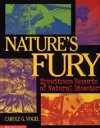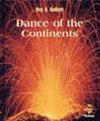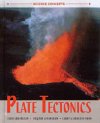A Volcano Wakes Up Additional Information
The Mount St. Helens VolcanoCam at www.fs.fed.us/gpnf/volcanocams/msh/ (Forest Service, U.S. Department of Agriculture) allows you to see what’s going on at any moment at the mountain. The view is from the Johnston Ridge Observatory.
The Mount St. Helens National Volcanic Monument has a Web site at www.fs.fed.us/gpnf/mshnvm/ (Forest Service, U.S. Department of Agriculture).
A history of recent eruptions at Mount St. Helens can be found at geopubs.wr.usgs.gov/fact-sheet/fs036-00/ (U.S. Geological Survey).
You can learn more about plate tectonics and volcanoes at kids.earth.nasa.gov/archive/pangaea/ (NASA) and pubs.usgs.gov/publications/text/dynamic.html (U.S. Geological Survey).
Czerneda, Julie. 2004. Warning, warning! Science News for Kids (Oct. 27). Available at http://www.sciencenewsforkids.org/articles/20041027/SciFiZone.asp.
Books recommended by SearchIt!Science:
 |
Nature’s Fury: Eyewitness Reports of Natural Disasters — Carole Garbuny Vogel
Published by Scholastic, 2000.
This book tells the story of thirteen natural disasters. Full of photographs and eyewitness accounts, it explores the impact natural disasters have on people, while also explaining how and why natural disasters occur. The first part of the book explores geological-related disasters: two major earthquakes, tsunamis, and the Mount St. Helens volcano eruption. Devastating storms, from hurricanes to tornadoes to blizzards, are described in the second part of the book. The third part of the book examines the dust bowl, a great fire, and a flash flood. With vivid eyewitness accounts appearing on nearly every page, this book is a compelling look at not only disasters but also survivors. |
 |
Dance of the Continents — Roy A. Gallant
Published by Benchmark Books/Marshall Cavendish, 2000.
“Every now and then planet Earth does something so suddenly and with such great force that it sends people screaming into the streets,” begins this book about the history of geological activity. Earthquakes, volcanoes, and tectonic plates are the volume’s focus, and the planet’s furious activity is illustrated with colorful photographs, period illustrations, and clear diagrams. The book begins by recounting famous disasters, such as eruptions of Pelee, Krakatau, and Vesuvius. Then, it discusses the theories of ancient Greeks such as Aristotle about earthquakes and volcanoes. When scientist James Hutton introduced the principle of uniformitarianism in 1790, however, modern geology was born. This book discusses the development of ideas such as continental drift and tectonic plate theory and explains the science of hot spots and how plates move. A final chapter explores how the geology of the continents may look in the future. |
 |
Plate Tectonics — Alvin Silverstein, Virginia Silverstein, Laura Silverstein Nunn
Published by Twenty-First Century Books/Millbrook Press, 1998.
A Japanese myth tells of an enormous catfish that lives deep inside the earth, which thrashes about to create earthquakes. Hindu people in ancient India believed that the earth rested on the backs of four elephants, which stood on the shell of a giant turtle. But today, we have the plate tectonic theory to help us understand why the earth moves and shifts sometimes. With clear diagrams and color photos, this book lays out plate tectonic theory: how geologists developed it, how continental drift, convection currents, and seafloor spreading work, and what the different types of boundaries and faults are. Volcanic activity and earthquakes are also discussed; and the future of plate tectonics is touched upon, including geothermal energy, predicting earthquakes and eruptions, and plate tectonics on other planets. |
Power Words
lava Hot, molten rock that flows out from a volcano or from a crack in the Earth’s surface.
magma The hot, liquid rock that is formed under the Earth’s crust. Magma can either cool underground, or it can flow out as lava if it reaches the Earth’s surface. Magma turns into igneous rock when it cools.
plate 1. A thin, flat sheet of metal or other material, especially one used as an electrode in a storage battery or capacitor. 2. In the theory of plate tectonics, one of the sections of the upper layer of the Earth, known as the lithosphere, that move slowly over the Earth’s inner layers. The continents ride piggy-back on the plates. The jostling and separation of the plates cause earthquakes and volcanoes.
plate tectonics A theory in geology that states that the Earth’s lithosphere (its crust and upper mantle) is divided into a number of large, plate-like sections that move very
slowly over the softer inner part of the Earth. Plate tectonics explains how the continents slowly change their positions over thousands of years. It also shows that volcanoes and faults in the Earth’s surface occur where the plates crash together or pull apart.
seismograph An instrument that detects and records vibrations and movements in the Earth during an earthquake. By comparing the records that are produced by seismographs in three or more locations, scientists can figure out where an earthquake occurred and how strong it was.
Copyright © 2002, 2003 Houghton-Mifflin Company. All rights reserved. Used with permission.
